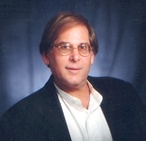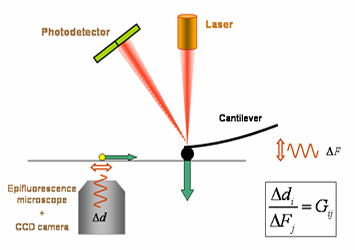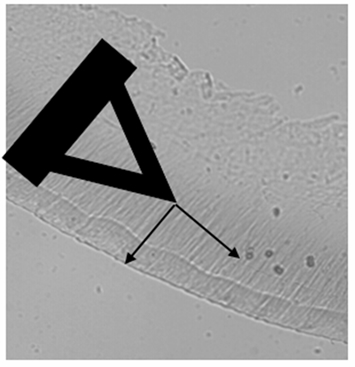
Richard Chadwick, Ph.D.
Chief
Section on Auditory Mechanics
Laboratory of Cellular Biology
NIDCD/NIH
Building 10, Room 5D/49
10 Center Drive, MSC 1417
Bethesda, MD 20892
Phone: (301) 435-1957
Fax: (301) 480-0827
E-mail: chadwick@helix.nih.gov
Research Statement
The aim of the section on Auditory Mechanics is to increase knowledge of the hearing process via an interweaving of mathematical, physical, and biological approaches and techniques. Advanced modeling techniques are used interactively with biophysical and structural data obtained from tissues in the organ of Corti to study cochlear physical phenomena related to the transduction of sound to auditory nerve impulses. Special emphasis is directed toward developing techniques to integrate subcellular, cellular, and macroscopic interactions.
Recent Accomplishments
Our efforts to study the multiscale nature of the hearing process run parallel to the multidisciplinary theme. Modeling wave propagation in a spiral shape cochlea begins as macroscopic phenomena, which cascades down to the molecular scale and ultimately affects how well mammals hear low frequencies. Nature has found a way to improve on the whispering gallery effect, where sound clings to a concave wall in architectural acoustics. In a spiral cochlea, with ever changing curvature, wave energy is focused at the apex, where low frequencies are processed, affecting the excitatory displacements of hair cell bundles. In a comparative study of morphology and audiometry across mammalian species, we have robustly validated our theory. We suggest the spiral form offers a selective advantage for hearing low frequencies, thus aligning the ideas of Darwin with “form follows function,” which, as we have said, can be traced back to Aristotle.
At the nanometer scale our lab specializes in probing cochlear tissues using the Atomic Force Microscope (AFM). We are fortunate to have one of about 30 Bioscope II set-ups. We modified ours to impress controlled indentations in all three directions. We have coupled this capability with optical tracking of fluorescent microspheres at a resolution of tens of nanometers (Fig. 1) This technology, combined with our mathematical modeling ability, poises us to be highly competitive with the best labs in nanoscale measurement and analysis of cochlear tissue. While we have focused primarily on determining the elastic moduli of normal tectorial membrane fibers and matrix (Fig. 2), we also plan to study the disrupted tectorial membranes of mutant mice.

Fig. 1. Our experimental approach to study the mechanical properties of a biological material combines Atomic Force Microscopy (AFM) to exert point-like forces and optical tracking of microspheres to measure surface displacements. View Larger Image

Fig. 2. A set of measurements on the tectorial membrane consists of several indentation measurements performed at increasing tip-bead distances in directions parallel or perpendicular to the collagen bundle. View Larger Image
Lab Personnel
Núria Gavara, Ph.D., Visiting Fellow (Send e-mail)
Katherine Szarama, NIH-Karolinska GPP (co-mentor with Matt Kelley) (Send e-mail)
Darlene Ketten, Ph.D., NRC Senior Associate, Woods Hole Oceanographic Institution (Send e-mail)
Sonya Smith, Ph.D., Special Volunteer, Howard Universtiy (Send e-mail)
Selected Publications
- Gavara N, Chadwick RS. Estimation of anisotropic elastic properties of cochlear tectorial membrane. In preparation, 2008.
- Smith S, Chadwick RS. Hydrodynamics of an inner hair cell stereocilia bundle: coherence, protection, and distortion. Submitted, 2008.
- Manoussaki D, Chadwick RS, Ketten DR, Arruda J, Dimitriadis EK, O’Malley JT. The influence of cochlear shape on low-frequency hearing. Proceedings of the National Academy of Sciences of the USA. In press, 2008.
- Chadwick RS, Liao Z. High frequency oscillations of a sphere in a viscous fluid near a rigid plane. SIAM Review. In press, 2007.
- Manoussaki D, Dimitriadis EK, Chadwick RS. Cochlea's graded curvature effect on low frequency waves. Physical Review Letters, 2006.
- Chadwick RS, Manoussaki D, Dimitriadis EK, Shoelson B, Ketten DR, Arruda J, O'Malley JT. Cochlear coiling and low-frequency hearing. In Auditory mechanisms; processes and models. Portland, OR. A.L. Nuttal et al., eds. World Scientific, Singapore, 2005.
- Cai H, Manoussaki D, Chadwick R. Effects of coiling on the micromechanics of the mammalian cochlea. Journal of the Royal Society, Interface/The Royal Society, 2005.
- Chadwick RS. Comment on Axisymmetric indentation of an incompressible elastic film. Journal on Applied Physics 38:1, 2004.
- Chadwick RS, Shoelson B, Cai H. Surface green's functions for an incompressible, transversely isotropic half space. SIAM Journal on Applied Mathematics, 2004.
- Shoelson B, Dimitriadis EK, Cai H, Kachar B, Chadwick RS. Evidence and implications of inhomogeneity in tectorial membrane elasticity. Biophysical Journal 87(4):2768–77, 2004.
- Cai H, Shoelson B, Chadwick RS. Evidence of tectorial membrane radial motion in a propagating mode of a complex cochlear model. Proceedings of the National Academy of Sciences of the USA 101(16):6243–8, 2004.
Top